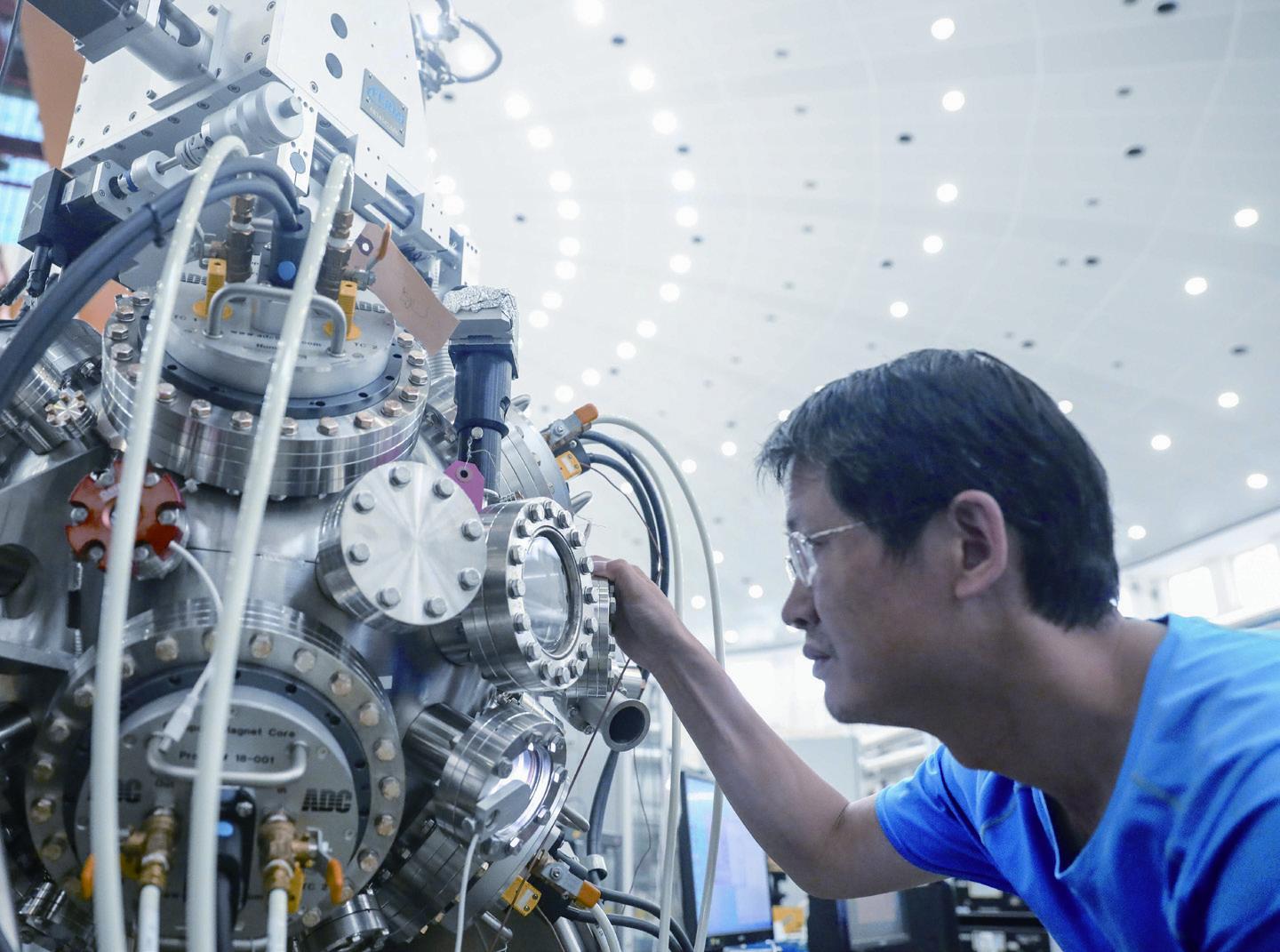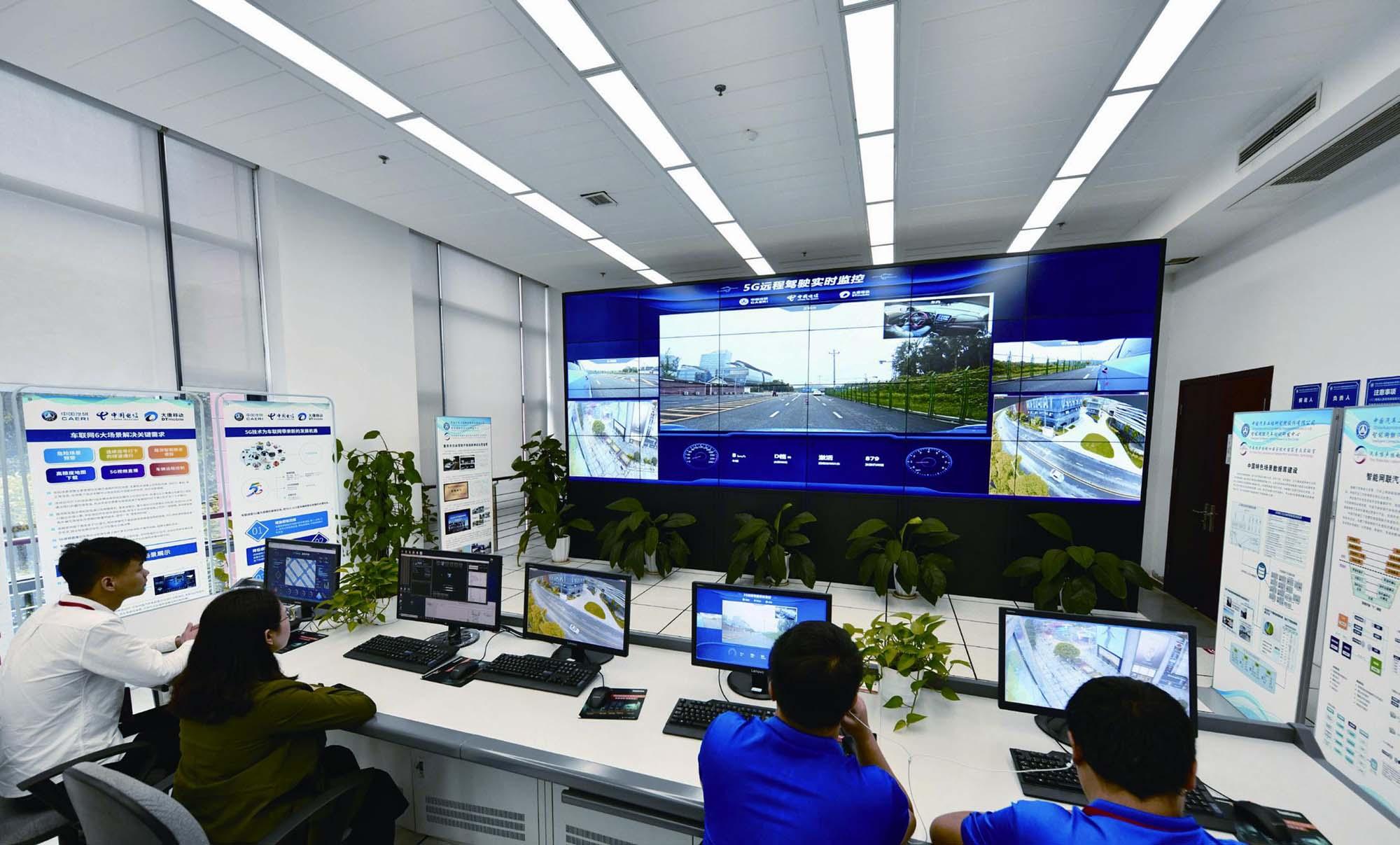A Shot in the Arm
2019-09-23ByWangHairong
By Wang Hairong

For eight years, Zhou Xin, Deputy Director of the Wuhan Institute of Physics and Mathematics under the Chinese Academy of Sciences (CAS), searched for a harmless way to diagnose lung cancer in its early stages as conventional diagnostic techniques either couldnt clearly reveal the pulmonary structure or were radioactive and thus harmful.
He finally came up with a magnetic resonance imaging (MRI) technique using xenon, a nontoxic inert gas, as the contrast agent. The prevailing MRI technique using water as the contrast agent to detect defects in organs does not work well with lungs because lung sacs are fi lled with air. Using Zhous method, when a patient inhales xenon gas and holds his or her breath for about six seconds, doctors can get an illuminated image of the lungs.
According to the National Natural Science Foundation of China (NSFC), which funded the research, after several years of clinical trials, a company has been set up to commercialize the results, and it is expected that 15,000 devices will be put into clinical use nationwide by 2030. The NSFC was established in 1986 to fund science and technology research and development(R&D) in China.
Increased funding
As China strives to become a more innovation-driven country, its R&D spending has grown rapidly, at double-digit speed in the past three years. The total R&D expenditure increased 11.8 percent to exceed 1.96 trillion yuan ($276 billion) in 2018, according to the Communiqué on National Expenditures on Science and Technology, released recently by the National Bureau of Statistics (NBS).This put R&D spending in China in second place worldwide for the sixth consecutive year, according to Li Yin, a statistician with the NBS.
Fiscal spending on R&D increased 13.5 percent year on year, with the Central Governments allocations accounting for 39.3 percent of the total.
“The high R&D spending will turn into the power driving Chinas high-quality development in the future,” He Daixin, a researcher with the National Academy of Economic Strategy under the Chinese Academy of Social Sciences, said.
Last year, the ratio of Chinas R&D expenditure to GDP was 2.19 percent, 0.04 percentage points higher than that of the previous year, the NBS report said. It exceeded the average level of 2.13 percent for 15 EU countries in 2017 and was close to the average level of 2.37 percent for members of the Organisation for Economic Co-operation and Development that consists of 34 of the worlds most developed economies.
Enterprises spent the most lavishly on R&D. According to the report, enterprises, state-owned research institutes and universities accounted for 77.4 percent, 13.7 percent and 7.4 percent of the total R&D expenditure, respectively. ??
Huawei Technology Co. Ltd., the largest telecommunications equipment manufacturer in the world, ranked number one in R&D spending among Chinese companies and fifth in the world, according to the 2018 EU Industrial R&D Investment Scoreboard released by the Economics of Industrial Research and Innovation project team under the European Commission. Huaweis financial report showed that it invested 101.5 billion yuan ($14.27 billion) in R&D last year, equivalent to 14.1 percent of its annual sales. In the same year, it also submitted 5,405 patent applications, higher than the 4,024 in the previous year, the World Intellectual Property Organization said.
Impressive outcome
Increased spending, in conjunction with measures to overhaul the science and technology system, has contributed to Chinas scientific and technological progress in the past four decades.


The number of patent applications for inventions in China has topped the world for eight years in a row, said Vice Minister of Commerce Wang Shouwen at a press conference in June.
Patent applications for inventions in China soared from 4,780 in 1988 to 1.54 million in 2018, with a total of 432,000 patents authorized, according to data from the National Intellectual Property Administration.

Moreover, Chinese scientists are prolifi c authors, evidenced by the number of their papers published in journals included in the Science Citation Index, which increased from 5,600 in 1988 to 324,200 in 2016, according to the Institute of Science and Development (ISD) under the CAS. The institute also said the contribution rate of scientific and technological progress to economic growth in China rose from 52.2 percent in 2012 to 57.5 percent in 2017, and the countrys ranking in national innovation ability rose from 20th place in the world in 2012 to 17th in 2017.
Chinese scientists have made breakthroughs in many fi elds, such as superconducting materials, quantum computation and communication, voice recognition, spherical radio telescopes, tunneling equipment, navigation satellite systems, lunar probes and high-yield hybrid rice.
Room for improvement
Despite the impressive progress, there is still a lot of room for improvement. A big gap remains between Chinas R&D intensity and those of the worlds leading countries in science and technology, Li pointed out. Chinas spending in basic research is low and so is the proportion of government spending, while breakthroughs in key core technologies are still insufficient and investment effi ciency needs to be improved, he said.
The NBS report showed that overall investment in basic research accounted for 5.5 percent of Chinas total R&D expenditure in 2018, on par with the level of the previous year. Although Chinese companies total R&D investment was high, their spending in basic research was low, making up for only 3.2 percent of the national total. Meanwhile, universities contributed 56.37 percent and state-owned research institutes 40.42 percent, the report said.
Last year, many Chinese companiesresearch spending was eclipsed by their Western counterparts. Huawei was the only Chinese company to make the top 50 companies on the EUs scoreboard, which covered 2,500 companies based in 46 countries whose combined R&D spending was approximately 90 percent of the total worldwide R&D expenditure of all businesses. There were 778 U.S. companies, 577 EU companies, 438 Chinese companies, 339 Japanese companies and 368 companies from the rest of the world on the list.

Chinas investment in basic research has remained at about 5 percent of total R&D spending for quite some time, which is far from enough. In comparison, it usually accounts for approximately 15 percent of total R&D investment in developed countries such as the United States, Japan and Germany, Yang Guoliang, a researcher with the ISD, told Beijing Review.
At the beginning of the 21st century, with the deepening of the science and technology system reform, the government increased investment in both basic and applied research, with its support for the latter growing stronger so that achievements could be applied to promote economic development, Yang said.
Since 2012, the government, more keenly aware of the importance of innovation and creativity, has intensified efforts to boost basic research. The NSFC, which mainly fi nances basic research, has grown rapidly, according to Yang.
However, to translate increased R&D into research outcomes and even tangible economic benefits, some challenges still need to be addressed. Zhang Xiaoqiang, then Vice Minister of the National Development and Reform Commission, said in 2013 that prominent problems included inappropriate allocation of scientific and technological resources, low fund-utilization efficiency and inadequate commercialization of new technologies.
In 2015, the Standing Committee of the National Peoples Congress, Chinas top legislature, amended the Law on Promoting the Transformation of Scientifi c and Technological Achievements, which was originally enacted in 1996. Last year, the NSFC kicked off a new round of reform on fund application and approval procedures.
When attending a seminar in August marking the 25th anniversary of the launch of a research fund for outstanding young scientists, Premier Li Keqiang said governments at all levels should increase longterm and stable support for basic research and guide enterprises to increase investment in this area. He also called for further reform of the funding system to give more incentive to scientists.
